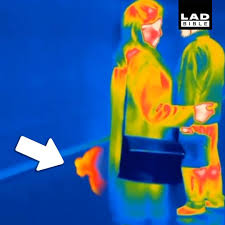Swarm robotics
The future of swarm robotics
What is it?
Swarm robotics is a promising idea of using small robots that carry out simplistic tasks on the small scale to create complex objectives. These robots communicate with each other to increase their efficiency, much like how ants and other insects work together in a hive to achieve objectives, such as collection of resources, defense and scouting. Many engineers have studied group and swarm dynamics of insects to provide a better understanding of how to design an effective swarm. To be effective, the swarm bots must cooperate, have awareness, use strong coordination and distribute the work load between the robots.What makes a swarm?
There are a few key factors that defining swarm robotics over other multi-purpose machines.- The robots are autonomous, with the ability to observe their surroundings, taking them into account. Their ability to sense their environment and other swarm robots assists them in collaboration.
- There can be swarm bots that serve different functions and operations compared to other groups but a majority of them have to be identical to each other. It would be more of a mob of robots if all of them were designed differently, and would negatively affect their replaceability and the synergy of the group.
- Synergy. They must work together to complete objectives that they otherwise couldn't complete themselves, robots that can do so individually are technically not a swarm robot.
- They also communicate amongst themselves, providing information about the environment and how other robots are currently working. This allows them to work more efficiently, sharing information cuts down on time required learning the environment. They can piece together what has been accomplished, what needs to be done.
- Lastly, there must be a large quantity of them. It wouldn't really be a swarm if there were only 5 or 6 of them.
Creating shapes
The video below displays thousands of robots working together to recreate a two dimensional image. Robots in the centre will stay in place to maintain organization and structure, with robots on the outside moving to its destination staying close to swarm so they can continuously communicate their positions and next moves, staying accurate. Very basic, but still impressive for hundreds of robots having to organize from random positions.
Warfare
News in the past has seen Drone Swarms in Warfare, most recently in the conflict between Russia and Syria. Drone swarms are most deadly when distributing work, humans can only coordinate information with so many targets. With drone swarms, they far surpass human capacity for information exchange, and can wipe out targets quickly and easily. Many armed forces are rushing to develop their own drone swarms, providing themselves with a massive advantage by minimizing risk to human life. This can potentially lead to an arms race to build larger armies of cheap drones to cancel out. Other measures might be necessary in the future, such as micro anti-air machines that can eliminate the smaller drones.
Future
Currently robotic swarms complete tasks at an extremely slow rate, having to wait for each robot to do its objective or get into position before the next robot does its function. The future prospects are immense for swarm robotics, with potential of construction of buildings combining technologies of 3D printers, use with drone swarms in the military, down to the nanometre with nanorobotics working together to construct molecular proteins. There are many paths that swarm robotics can diverge down, that can lead to new discoveries and assistance for mankind or bringing a new age of terror, autonomous killing machines that work efficiently together to bring as much destruction as possible. Whichever path we find ourselves, it will be incredibly interesting what the future holds for this technology.
Sources: https://www.hindawi.com/journals/isrn/2013/608164/
https://www.theguardian.com/news/2019/dec/04/are-drone-swarms-the-future-of-aerial-warfare
https://www.youtube.com/watch?v=G1t4M2XnIhI




Comments
Post a Comment